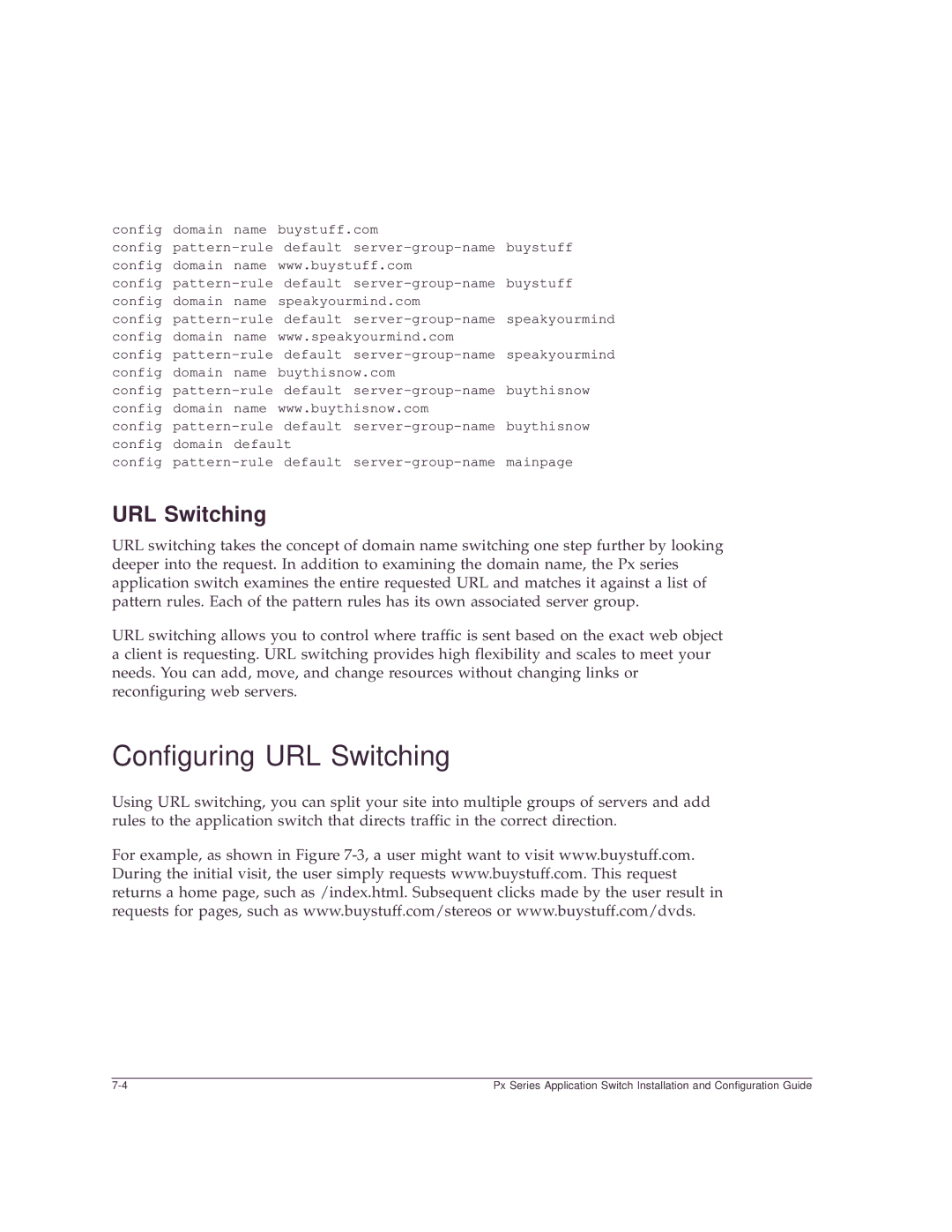config domain name buystuff.com
config
config
config
config
config
config
config
URL Switching
URL switching takes the concept of domain name switching one step further by looking deeper into the request. In addition to examining the domain name, the Px series application switch examines the entire requested URL and matches it against a list of pattern rules. Each of the pattern rules has its own associated server group.
URL switching allows you to control where traffic is sent based on the exact web object a client is requesting. URL switching provides high flexibility and scales to meet your needs. You can add, move, and change resources without changing links or reconfiguring web servers.
Configuring URL Switching
Using URL switching, you can split your site into multiple groups of servers and add rules to the application switch that directs traffic in the correct direction.
For example, as shown in Figure
Px Series Application Switch Installation and Configuration Guide |
